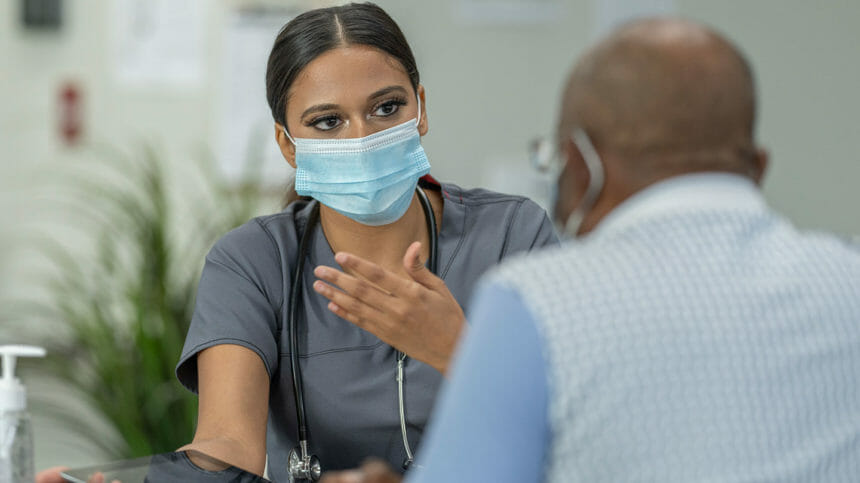
Now that pandemic mitigation measures are being relaxed, federal health officials recommend that healthcare providers wear N95 respirators when seeing patients with possible or confirmed COVID-19. A team of Harvard doctors, however, encourages workers to go a step further to improve the chances of preventing infection and transmission — by keeping an eye on area COVID-19 rates.
“N95s may be just as important for the care of patients without suspected COVID-19 when community incidence rates are high,” wrote Michael Klompas, M.D., MPH, of Harvard Medical School and Harvard Pilgrim Health Care Institute, Boston. “This is because SARS-CoV-2 is most contagious before symptom onset,” he added. “Ironically, by the time patients are sick enough to be admitted to hospital with COVID-19, they tend to be less contagious.”
Healthcare facilities are at their most vulnerable to these early, symptomless infections when cases in the surrounding community spike, Klompas and his physician colleagues noted. During these times, the superior fit and filtration of an N95 mask can provide extra protection from exposure to both patients and/or healthcare providers with early undiagnosed infection, they said.
“Universal use of N95s may help decrease [healthcare-related] transmission at such times,” the authors concluded.
The Centers for Disease Control and Prevention also recommends that long-term care providers continue wearing goggles and N95 or higher-level respirators in situations where they have close contact with any resident, symptomatic or asymptomatic.
An article detailing the doctors’ recommendations has been published in the journal Clinical Infectious Diseases.




